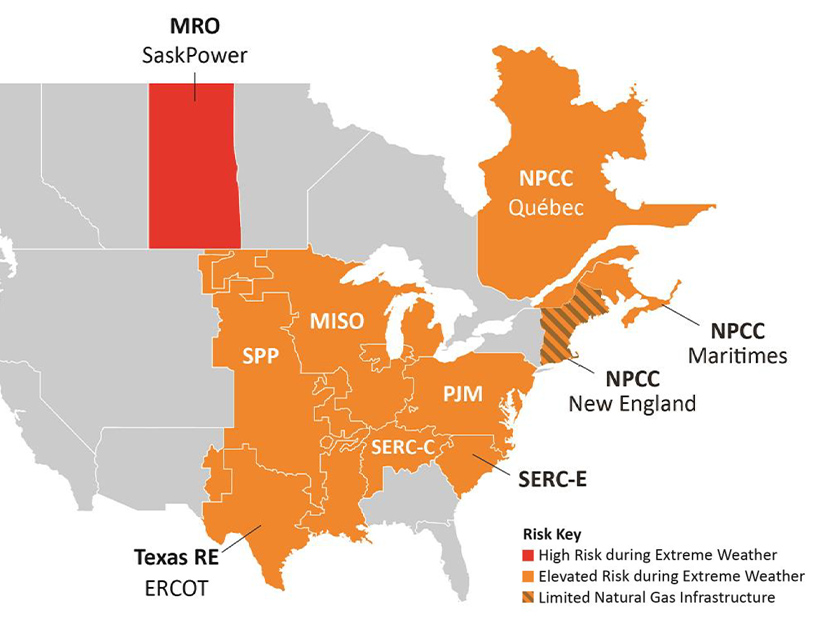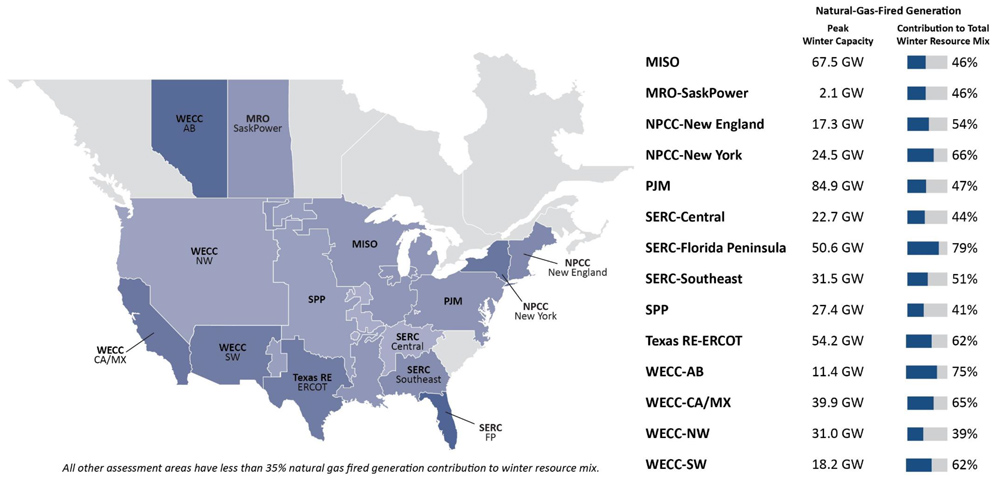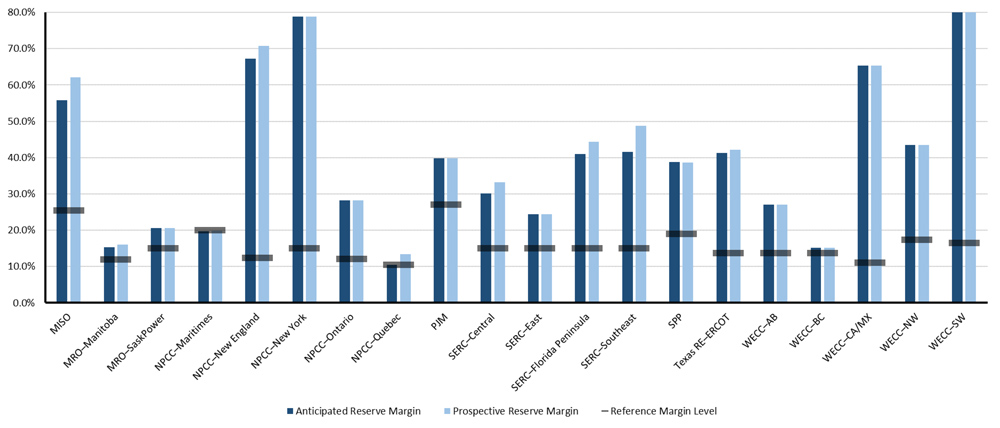
The winter storms of recent years are weighing on NERC leaders’ minds heading into the 2023-2024 winter season, with the ERO’s 2023 Winter Reliability Assessment warning that much of the North American continent faces elevated or high risk of energy shortfalls during extreme weather conditions.
The assessment, released Wednesday, covers the months of December through February and was developed by subject matter experts within the ERO’s technical committees and industry groups, NERC Director of Reliability Assessment and Performance Analysis John Moura said in a media call. Moura said the report spotlights worrying trends around reliability.
“For decades, the system has mostly been built and planned around summer peaks, the concept there being that we have higher demand during the summer period, and therefore we need to make sure we’ve got a lot of capacity to serve that demand,” Moura said. “However, what we’ve seen in … probably the last 10 years is an increased vulnerability to wintertime. That’s not because of the peak demands … but mostly because of generator outages” from cold weather.
Moura acknowledged that the assessment was released “on the heels of” Tuesday’s publication of the final report from FERC and NERC’s joint inquiry into the winter storm that caused more than 90 GW in coincident unplanned outages over Christmas 2022, also known as Winter Storm Elliott. (See FERC-NERC Elliott Report Calls Winter Outages ‘Unacceptable’.) He noted that the Elliott report “reiterated some of the very same findings we’ve seen year after year during these winter impacts,” including inadequate winterization of generation plants and disruptions to fuel supply, particularly for natural gas facilities.
Those issues appear again in the assessment, which highlights the fact that declining natural gas production during Elliott contributed “to wide-area electricity and natural gas shortages.” Mark Olson, NERC’s manager of reliability assessments, said that while “nearly all areas have adequate resources for normal peak demand,” extreme, long-duration cold weather events could lead to similar disruptions this winter, despite industry efforts to prepare for the worst.
Multiple Regions Face Elevated Risk
NERC noted that SPP, MISO, ERCOT, PJM and parts of the SERC Reliability and Northeast Power Coordinating Council regional entities are all at elevated risk, indicating the potential for insufficient operating reserves in above-normal peak conditions. Only Canada’s Saskatchewan province was assessed as high risk, meaning energy shortfalls could occur during normal peak conditions. All other regions expect to have sufficient operating reserves for normal peak conditions.
The report attributed the high risk in Saskatchewan — where reserve margins have fallen 8% compared to last winter — to increased peak demand projections and the retirement of a 95-MW natural gas unit, as well as planned maintenance that will leave generators out of service. NERC said that during extreme winter conditions and large generation forced outages, SaskPower — the principal electric utility in the province — might need to turn to demand response programs, power transfers from neighbors, maintenance rescheduling or short-term load interruptions.
For MISO, the report noted that available resources have increased more than 9 GW from last winter, thanks to the addition of new wind and gas-fired generation and the extension of some older fossil fuel plants. However, NERC added that an extreme cold weather event that affects MISO’s southern areas could lead to outages at inadequately winterized generators or issues with natural gas supply.
Three subregions of NPCC face elevated risk, according to the report: Québec; the Maritimes provinces and Northern Maine; and New England. All three subregions could see energy shortfalls during periods of peak demand; in the case of New England, the challenge is exacerbated by the need to use natural gas for both electricity generation and consumer space heating, potentially stressing the area’s limited gas delivery infrastructure.
In PJM and SERC’s East and Central areas — which cover the Carolinas, Tennessee and portions of Georgia, Alabama, Mississippi, Missouri and Kentucky — generating resources “have changed little [since] 2022,” while forecasted peak demand has risen over the last year in the areas hit hardest by Elliott. While NERC said PJM and SERC “have adequate resources for normal winter conditions,” extreme conditions could lead to generator derates and outages.
SPP’s anticipated reserve margin of 38.8% stands more than 30 percentage points lower than last year’s forecast, NERC said. The drop is mainly from rising demand and reduced resource capacity. Notably, the report pointed out that SPP’s “vast wind resources” could be a help or a hindrance depending on the level of wind activity.
Finally, in Texas, as in other regions, “robust load growth” has not been matched by corresponding growth in dispatchable resources. As a result, NERC said the risk of reserve shortages has risen since last winter, though ERCOT “is taking steps to procure additional capacity” heading into the winter months and has implemented a new firm fuel supply service to help offset lost generation capacity from limited natural gas supplies.
NERC’s recommendations for utilities in the elevated-risk areas include reviewing seasonal operating plans and ensuring operators are trained and familiar with manual load-shedding procedures in advance of severe weather. The ERO also advised balancing authorities that short-term load forecasts may “underestimate load in extreme cold weather events” and that they should be prepared to manage potential reserve deficiencies.
In addition, NERC recommended that reliability coordinators and balancing authorities conduct fuel surveys and prepare their operating plans for supply shortfalls. State and provincial regulators can help by “supporting requested environmental and transportation waivers as well as public appeals for electricity and natural gas conservation,” it said.



